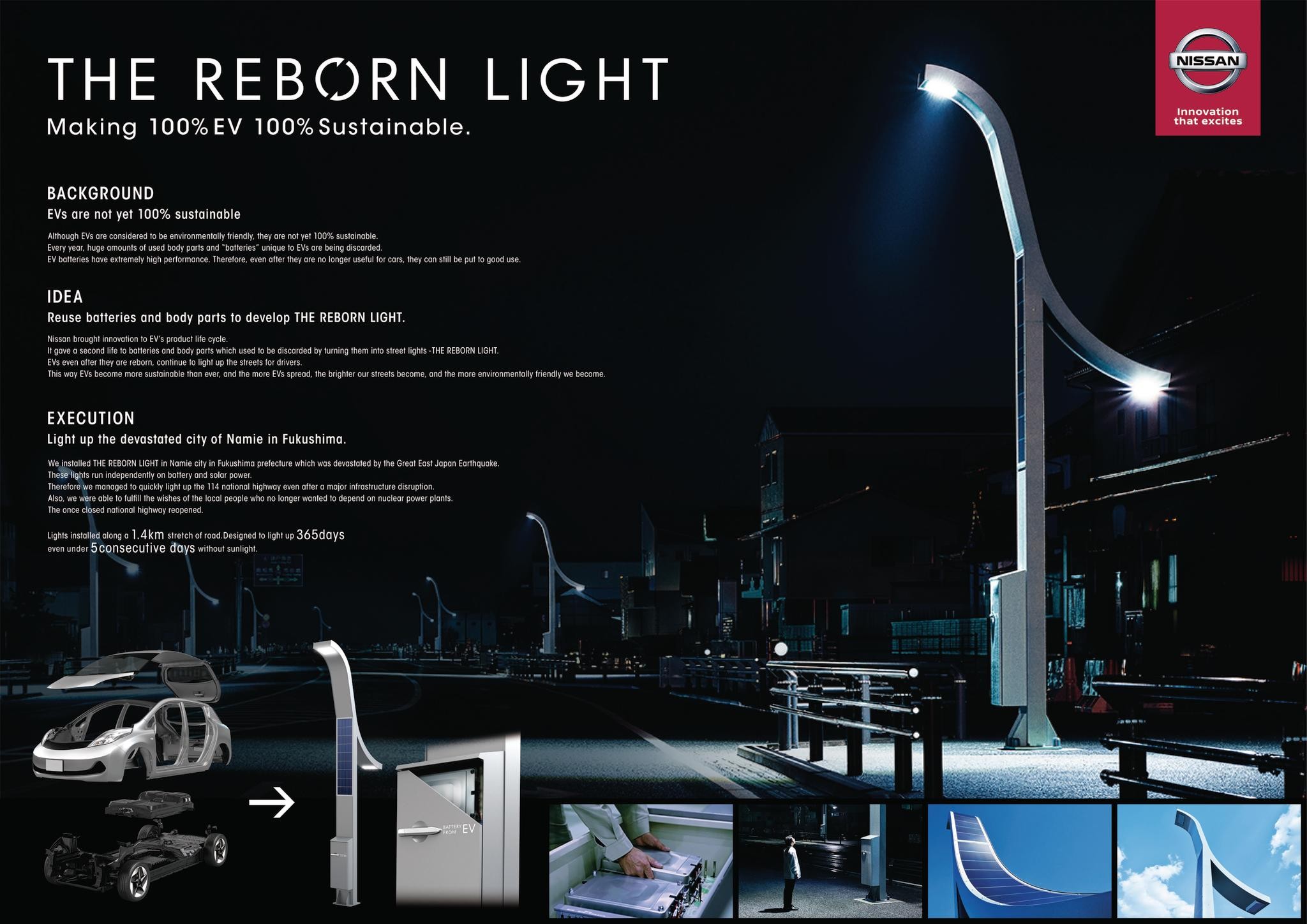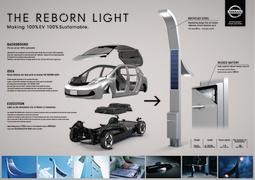Spikes Asia
THE REBORN LIGHT
TBWA\HAKUHODO INC., Tokyo / NISSAN MOTOR CO., LTD / 2019
Awards:



Overview
Entries
Credits
OVERVIEW
Background
People believe that EVs are sustainable but it's not completely true.
Although EV uses high-performance batteries, they have battery life, and batteries that reach their end of life get discarded. Together with batteries, EV's sophisticated body parts are also disposed. EV batteries and body parts could have been repurposed after they finished serving in EVs.
"Making EVs 100% sustainable." This was the major challenge we and our client embarked on.
Idea
Nissan has redesigned a new life cycle of EVs.
Nissan transformed EV batteries and body parts - from things that finished their role in EVs to something that can be reborn and repurposed for people again.
Nissan had the idea of “THE REBORN LIGHT.”
Street lights that could be used in areas without electric grids were created from discarded EV batteries and body parts.
EV continues to illuminate streets and drivers after it's reborn.
The more people drive EVs, the more this light will be placed in cities and streets to illuminate people's lives. EV is now 100% sustainable, recycled and transformed into new environmentally friendly lights.
Strategy
Although many car manufacturers are examining the way to recycle EV battery, it has not become an industry due to the high cost.
Nissan considered that it will be more efficient to reuse batteries as a big rechargeable battery without separating and melting the battery.
Also, focusing on the fact that battery is portable, we developed a new infrastructure by combining it with solar panel, allowing it to be used in any country and regions.
Execution
THE REBORN LIGHT does not require electrical power source.
Its energy is reserved during daytime using EV and solar power and illuminates at night.
The main body is made from recycled steel of EVs. Even under frequent natural disasters such as earthquakes and typhoons in Japan, it will never fall as its strength is secured by its accurately calculated design. It can reserve energy, so even if there is no sunlight for five consecutive days, it can illuminate for 365 days. Nissan selected a location experiencing the most electricity shortage in Japan.
The lights were installed along the National Route 114 in Namie-city, Fukushima – the town seriously damaged by the Great East Japan Earthquake. The lights supported the lives of tens of thousands of people, and drove the way towards reconstruction. THE REBORN LIGHT is turning Namie-city the most devastated city, into the most sustainable city in Japan.
Outcome
THE REBORN LIGHT has supported the full-scale recovery of the National Route 114 in Namie-city that was dark and inconvenient. The improved conditions of the National Route 114 contributed to the facilitation of reconstruction works in Namie-city.
THE REBORN LIGHT developed a new eco-system of EV battery reuse and proved EV’s amazing potential to the world, which helped to increase the understanding of EV significance by 12 %.
More than 20 regions showed interest in this light and made inquiries about its installation.
Nissan plans to further expand this project and take it beyond Namie-city as well.